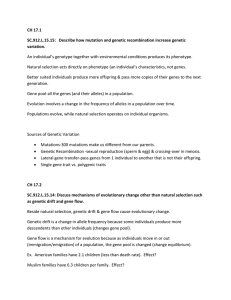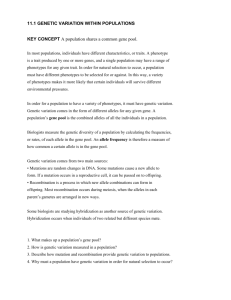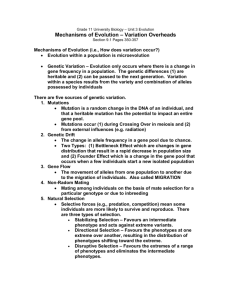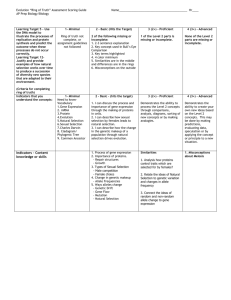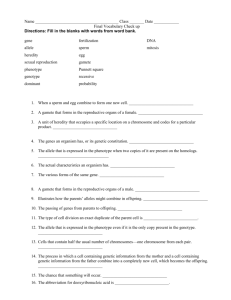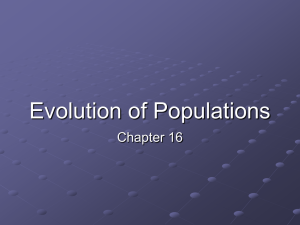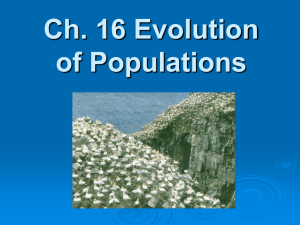17.1 Genes and Variations
advertisement
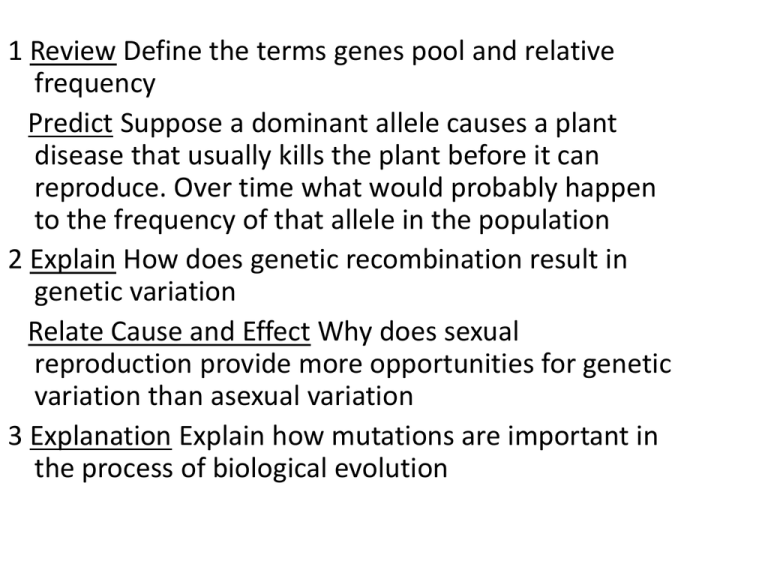
1 Review Define the terms genes pool and relative frequency Predict Suppose a dominant allele causes a plant disease that usually kills the plant before it can reproduce. Over time what would probably happen to the frequency of that allele in the population 2 Explain How does genetic recombination result in genetic variation Relate Cause and Effect Why does sexual reproduction provide more opportunities for genetic variation than asexual variation 3 Explanation Explain how mutations are important in the process of biological evolution CH 17 EVOLUTION OF POPULATIONS 17.1 Genes and Variation Darwin developed his theory of evolution without knowing how heritable traits passed from one generation to the next or where heritable variation came from. In genetic terms Evolution is the change in allele frequency of a population over time. Genotype and Phenotype in Evolution Natural selection acts directly on phenotype, not genotype Some individuals have phenotypes that are better suited to their environment than others, produce more offspring and pass on more copies of their genes to the next generation. Gene Pool All the genes, including all the different alleles for each gene that are present in a population. Relative Frequency Number of times a particular allele occurs in a gene pool, compared with the total number of times alleles for the same gene occurs. Natural selection operates on individuals Evolution operates on populations. Sources of Genetic Variation Mutation Genetic recombination during sexual reproduction Lateral gene transfer. Mutations Mutations that produce changes in phenotype may or may not affect fitness Some lethal or lower fitness Some beneficial and raise fitness Only matter if they can be passed from generation to generation Must occur in the germ line cells that produce either eggs or sperm. Genetic Recombination in Sexual Reproduction Most heritable differences are due to genetic recombination We have 23 chromosomes Number of combinations 223 8.4 million combinations of each sperm or egg. Lateral Gene Transfer Occurs when organisms pass genes from one individual to another that is not its offspring Can be same or different species Think bacteria. Single-Gene Traits Trait controlled by only one gene Just two or three distinct phenotypes Most common form of the allele can be dominant or recessive. Polygenic Traits Traits controlled by two or more genes Each gene of a polygenic trait often has two or more alleles Often has many possible genotypes and even more different phenotypes.

